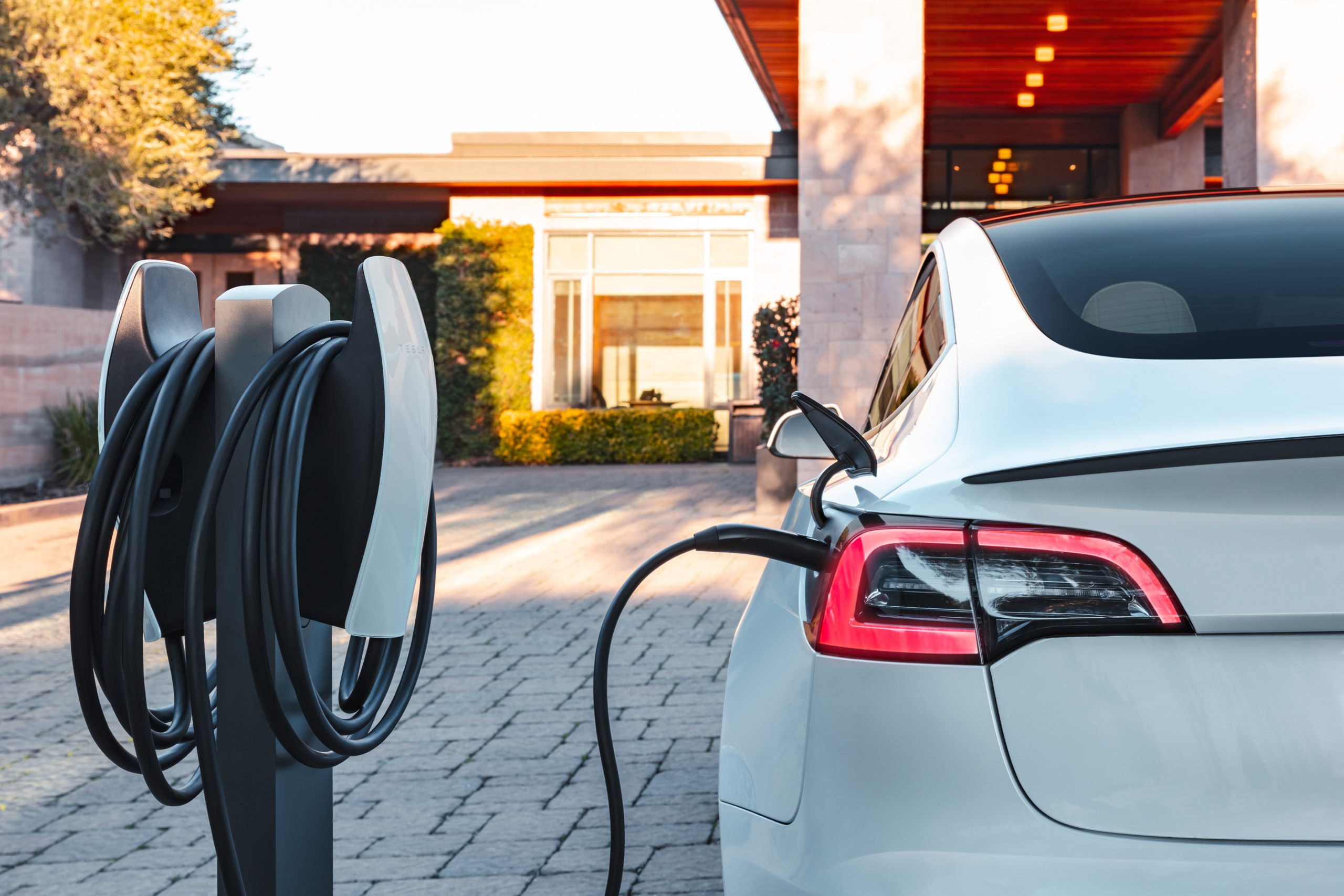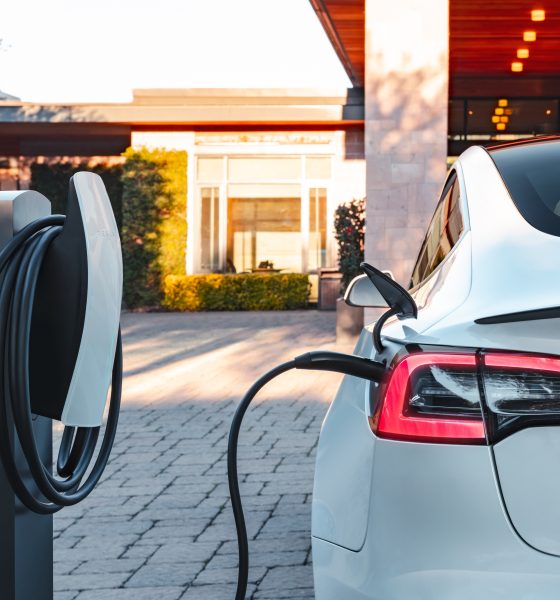Tesla is partnering with electric vehicle charging reliability platform ChargerHelp! to survey the status of various chargers in the company’s Destination Charger Network.
ChargerHelp! is an app-based dispatch and deployment system that helps to resolve issues with downed or inoperable electric vehicle charging stations. The company offers on-demand repairs and maintenance support from local workforces, which can come and service a malfunctioning EV charger in Tesla’s Destination Charger Network.
Tesla’s Destination Charging Network consists of over 35,000 wall connectors at Destination Charging Sites, which include hotels, restaurants, and resorts. They are not as powerful as the Tesla Superchargers as they only offer 22 kW of power. Tesla’s high-powered V3 Supercharger offers 250 kW for comparison.
ChargerHelp! said its partnership with Tesla will start in California as the platform will survey Destination stations to provide critical data points and insights pertaining to the station’s overall performance.
Perhaps the biggest issue facing EV adoption is charger reliability. The issue pushed California Governor Gavin Newsom to write the “EV Charging Reliability Transparency Act,” a bill supported by ChargerHelp!, which could help solve most of the issues with EV charging maintenance. A study from the University of California Berkley that found that only 72.5% of chargers in the Bay Area were operable, despite having lofty plans to eliminate ICE car sales by 2035.
“Trusting that a charging station will work and knowing that if there is an issue it will be fixed in a timely manner is essential to EV drivers and paramount to the success of the industry,” Kameale C. Terry, ChargerHelp! Co-Founder & Chief Executive Officer, said.
Electric vehicle chargers are widely available and companies are working to expand their presence of piles that can support a variety of cars. Additionally, the United States has funneled billions to expanding the electric vehicle charging infrastructure, looking to build at least 500,000 additional EV chargers in the U.S., thanks to $7.5 billion in funding.
The White House has also announced over $700 million in private sector commitments for EV charging infrastructure:
- Toyota announced an additional $2.5 billion investment in a Greensboro, North Carolina manufacturing facility.
- Honda and LG Energy Solution announced a $4.4 billion joint venture in a to-be-announced location in the U.S.
- Ford Motor Company announced it will invest $3.7 billion in assembly plants in Michigan, Ohio and Missouri and create 6200 jobs.
- Panasonic announced a $4 billion plant in De Soto, Kansas that will create 4,000 jobs. Panasonic is also reportedly evaluating a similar investment in an additional new battery factory.
- Vinfast announced a more than $5 billion investment in building electric vehicles and batteries in North Carolina that will create 13,000 jobs.
- Hyundai announced a $5.5 billion investment to build electric vehicles and batteries near Savannah, Georgia
- Through DOE’s Advanced Technology Vehicle Manufacturing program, the Department of Energy announced a $2.5 billion loan in July 2022 to General Motors for battery manufacturing facilities in Ohio, Tennessee, and Michigan
ChargerHelp! was founded in 2020 and operates at a fixed monthly price per EV charging station, it said.
I’d love to hear from you! If you have any comments, concerns, or questions, please email me at joey@teslarati.com. You can also reach me on Twitter @KlenderJoey, or if you have news tips, you can email us at tips@teslarati.com.

News
Waymo sues Santa Monica over order to halt overnight charging sessions
In its complaint, Waymo argued that its self-driving cars’ operations do not constitute a public nuisance, and compliance with the city’s order would cause the company irreparable harm.

Waymo has filed a lawsuit against the City of Santa Monica in Los Angeles County Superior Court, seeking to block an order that requires the company to cease overnight charging at two facilities.
In its complaint, Waymo argued that its self-driving cars’ operations do not constitute a public nuisance, and compliance with the city’s order would cause the company irreparable harm.
Nuisance claims
As noted in a report from the Los Angeles Times, Waymo’s two charging sites at Euclid Street and Broadway have operated for about a year, supporting the company’s growing fleet with round-the-clock activity. Unfortunately, this has also resulted in residents in the area reportedly being unable to sleep due to incessant beeping from self-driving taxis that are moving in and out of the charging stations around the clock.
Frustrated residents have protested against the Waymos by blocking the vehicles’ paths, placing cones, and “stacking” cars to create backups. This has also resulted in multiple calls to the police.
Last month, the city issued an order to Waymo and its charging partner, Voltera, to cease overnight operations at the charging locations, stating that the self-driving vehicles’ activities at night were a public nuisance. A December 15 meeting yielded no agreement on mitigations like software rerouting. Waymo proposed changes, but the city reportedly insisted that nothing would satisfy the irate residents.
“We are disappointed that the City has chosen an adversarial path over a collaborative one. The City’s position has been to insist that no actions taken or proposed by Waymo would satisfy the complaining neighbors and therefore must be deemed insufficient,” a Waymo spokesperson stated.
Waymo pushes back
In its legal complaint, Waymo stated that its “activities at the Broadway Facilities do not constitute a public nuisance.” The company also noted that it “faces imminent and irreparable harm to its operations, employees, and customers” from the city’s order. The suit also stated that the city was fully aware that the Voltera charging sites would be operating around the clock to support Waymo’s self-driving taxis.
The company highlighted over one million trips in Santa Monica since launch, with more than 50,000 rides starting or ending there in November alone. Waymo also criticized the city for adopting a contentious strategy against businesses.
“The City of Santa Monica’s recent actions are inconsistent with its stated goal of attracting investment. At a time when the City faces a serious fiscal crisis, officials are choosing to obstruct properly permitted investment rather than fostering a ‘ready for business’ environment,” Waymo stated.
News
Tesla FSD v14.2.2 is getting rave reviews from drivers
So far, early testers have reported buttery-smooth drives with confident performance, even at night or on twisty roads.

Tesla Full Self-Driving (Supervised) v14.2.2 is receiving positive reviews from owners, with several drivers praising the build’s lack of hesitation during lane changes and its smoother decision-making, among others.
The update, which started rolling out on Monday, also adds features like dynamic arrival pin adjustment. So far, early testers have reported buttery-smooth drives with confident performance, even at night or on twisty roads.
Owners highlight major improvements
Longtime Tesla owner and FSD user @BLKMDL3 shared a detailed 10-hour impression of FSD v14.2.2, noting that the system exhibited “zero lane change hesitation” and “extremely refined” lane choices. He praised Mad Max mode’s performance, stellar parking in locations including ticket dispensers, and impressive canyon runs even in dark conditions.
Fellow FSD user Dan Burkland reported an hour of FSD v14.2.2’s nighttime driving with “zero hesitations” and “buttery smooth” confidence reminiscent of Robotaxi rides in areas such as Austin, Texas. Veteran FSD user Whole Mars Catalog also demonstrated voice navigation via Grok, while Tesla owner Devin Olsen completed a nearly two-hour drive with FSD v14.2.2 in heavy traffic and rain with strong performance.
Closer to unsupervised
FSD has been receiving rave reviews, even from Tesla’s competitors. Xpeng CEO He Xiaopeng, for one, offered fresh praise for FSD v14.2 after visiting Silicon Valley. Following extended test drives of Tesla vehicles running the latest FSD software, He stated that the system has made major strides, reinforcing his view that Tesla’s approach to autonomy is indeed the proper path towards autonomy.
According to He, Tesla’s FSD has evolved from a smooth Level 2 advanced driver assistance system into what he described as a “near-Level 4” experience in terms of capabilities. While acknowledging that areas of improvement are still present, the Xpeng CEO stated that FSD’s current iteration significantly surpasses last year’s capabilities. He also reiterated his belief that Tesla’s strategy of using the same autonomous software and hardware architecture across private vehicles and robotaxis is the right long-term approach, as it would allow users to bypass intermediate autonomy stages and move closer to Level 4 functionality.
News
Elon Musk’s Grok AI to be used in U.S. War Department’s bespoke AI platform
The partnership aims to provide advanced capabilities to 3 million military and civilian personnel.

The U.S. Department of War announced Monday an agreement with Elon Musk’s xAI to embed the company’s frontier artificial intelligence systems, powered by the Grok family of models, into the department’s bespoke AI platform GenAI.mil.
The partnership aims to provide advanced capabilities to 3 million military and civilian personnel, with initial deployment targeted for early 2026 at Impact Level 5 (IL5) for secure handling of Controlled Unclassified Information.
xAI Integration
As noted by the War Department’s press release, GenAI.mil, its bespoke AI platform, will gain xAI for the Government’s suite of tools, which enable real-time global insights from the X platform for “decisive information advantage.” The rollout builds on xAI’s July launch of products for U.S. government customers, including federal, state, local, and national security use cases.
“Targeted for initial deployment in early 2026, this integration will allow all military and civilian personnel to use xAI’s capabilities at Impact Level 5 (IL5), enabling the secure handling of Controlled Unclassified Information (CUI) in daily workflows. Users will also gain access to real‑time global insights from the X platform, providing War Department personnel with a decisive information advantage,” the Department of War wrote in a press release.
Strategic advantages
The deal marks another step in the Department of War’s efforts to use cutting-edge AI in its operations. xAI, for its part, highlighted that its tools can support administrative tasks at the federal, state and local levels, as well as “critical mission use cases” at the front line of military operations.
“The War Department will continue scaling an AI ecosystem built for speed, security, and decision superiority. Newly IL5-certified capabilities will empower every aspect of the Department’s workforce, turning AI into a daily operational asset. This announcement marks another milestone in America’s AI revolution, and the War Department is driving that momentum forward,” the War Department noted.










